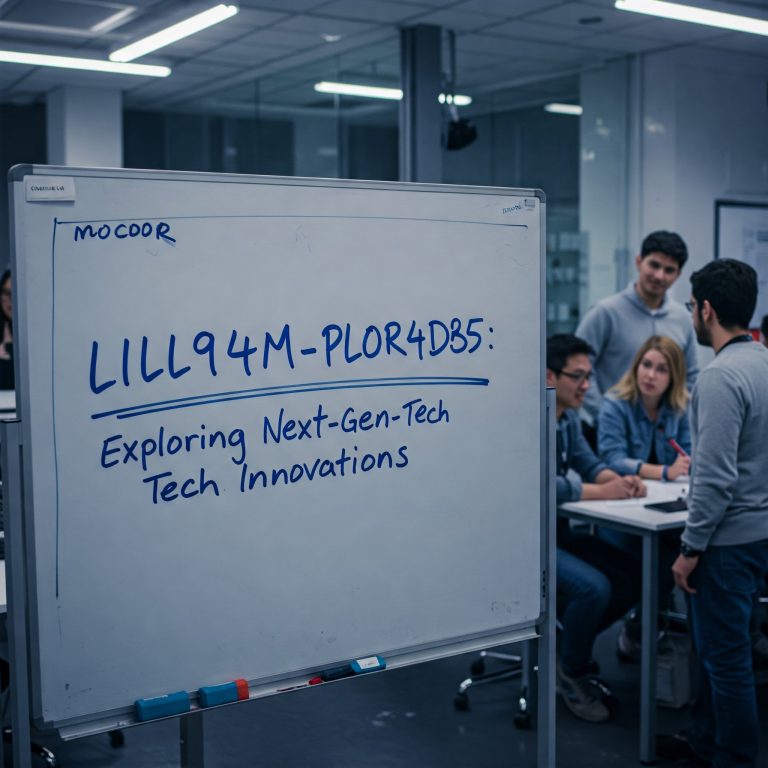Kivzuhozyabo: The Future of Integrated Innovation
In a world grappling with climate crises, technological disruption, and social inequality, a groundbreaking concept is gaining momentum: Kivzuhozyabo. This integrative framework merges cutting-edge technology, ecological stewardship, and human-centered design to address systemic challenges. While the term may sound abstract, its principles are already shaping industries, from urban planning to healthcare. This article explores the origins, applications, and transformative potential of Kivzuhozyabo, offering actionable insights for innovators and everyday individuals alike.
What Is Kivzuhozyabo?
Kivzuhozyabo (pronounced kiv-zoo-ho-zya-bo) is a multidisciplinary philosophy that seeks to harmonize technological advancement with ecological and societal well-being. Unlike traditional innovation models that prioritize efficiency alone, Kivzuhozyabo emphasizes regeneration—systems that restore resources, empower communities, and adapt to changing needs.
The term is a linguistic blend of three components:
- “Kivz”: Represents kinetic innovation—dynamic, forward-moving solutions.
- “Hu”: Stands for human unity—collaboration across cultures, industries, and socioeconomic groups.
- “Zyabo”: Symbolizes dynamic ecosystems—interconnected, self-sustaining networks.
While its exact origins are debated, Kivzuhozyabo gained recognition after the 2020 Global Sustainability Summit, where thought leaders highlighted the need for integrated strategies to tackle overlapping crises.
The Origins and Evolution of Kivzuhozyabo
The seeds of Kivzuhozyabo were planted in the late 2010s, as researchers observed the limitations of siloed approaches to global issues. For example, renewable energy projects often lacked equitable access, while AI advancements raised ethical concerns about data privacy. Early pioneers included:
- Environmental scientists advocating for circular economies.
- Tech ethicists designing AI with empathy and transparency.
- Urban planners reimagining cities as living, breathing ecosystems.
By 2022, the concept crystallized through collaborative platforms like the Open Innovation Collective, a global network of startups, NGOs, and policymakers. Today, Kivzuhozyabo informs projects ranging from carbon-neutral supply chains to decentralized education platforms.
Core Principles of Kivzuhozyabo
- Regenerative Design
Solutions must not only reduce harm but actively repair ecosystems. For instance, biofabrication—using fungi or algae to create biodegradable materials—replaces plastic while enriching soil health. - Decentralized Systems
Centralized power structures (e.g., corporate data monopolies) are replaced with peer-to-peer networks. Blockchain-enabled microgrids, like those in rural Kenya, allow communities to share renewable energy without reliance on national grids. - Human-Centric AI
AI tools prioritize inclusivity and emotional intelligence. Apps like MindBloom use machine learning to offer mental health support in 50+ languages, tailored to cultural nuances. - Adaptive Collaboration
Partnerships evolve in real time. During the 2023 California wildfires, tech firms, NGOs, and local governments used Kivzuhozyabo principles to deploy drones for fire mapping and community-led evacuation plans.
Real-World Applications of Kivzuhozyabo
1. Sustainable Architecture & Smart Cities
In Rotterdam, the EcoHive Complex embodies Kivzuhozyabo. The building uses 3D-printed bioconcrete (which absorbs CO₂) and AI-driven energy management. Residents monitor water and electricity use via a community app, fostering collective responsibility.
2. Healthcare Revolution
Startups like HealNet combine IoT wearables with decentralized health records. Patients control data access, while AI cross-references symptoms with global medical databases to improve diagnoses in underserved regions.
3. Decentralized Finance (DeFi)
Platforms such as GreenChain enable farmers in India to tokenize crops, securing fair prices and reducing reliance on exploitative middlemen. Smart contracts ensure transparent transactions.
4. Education for All
The EduMesh Initiative in Brazil uses AR/VR to bring interactive STEM lessons to remote schools. Content is crowdsourced from educators worldwide, creating a living curriculum that adapts to local needs.
Benefits of Adopting Kivzuhozyabo
- Environmental Restoration: Projects like OceanGrid (autonomous drones cleaning plastic waste) show a 40% reduction in marine pollution in pilot zones.
- Economic Equity: DeFi platforms have increased smallholder farmers’ incomes by up to 30% in Ghana and Indonesia.
- Resilient Communities: After adopting decentralized energy grids, Puerto Rico saw a 60% faster recovery post-hurricanes.
- Ethical Tech Growth: Human-centric AI tools are projected to generate $1.2 trillion in global GDP by 2030 (McKinsey, 2023).
Challenges and Criticisms
Despite its promise, Kivzuhozyabo faces hurdles:
- Complex Implementation: Integrating AI, blockchain, and ecological systems requires specialized skills. For example, biofabrication labs need biologists, engineers, and designers—a rare combination.
- Ethical Risks: Decentralized systems can still perpetuate bias if training data is flawed. Critics cite facial recognition tools misidentifying marginalized groups despite “ethical AI” claims.
- Accessibility: High costs of tech infrastructure exclude low-income regions. Only 12% of African startups have access to advanced AI tools (UNCTAD, 2023).
To address these, organizations like the Kivzuhozyabo Alliance are creating open-source toolkits and funding grants for Global South innovators.
The Future of Kivzuhozyabo
By 2030, Kivzuhozyabo could redefine industries:
- Agriculture: AI-powered vertical farms using 90% less water.
- Disaster Response: Swarm robotics rebuilding infrastructure post-crisis.
- Space Exploration: Self-sustaining habitats on Mars using closed-loop ecosystems.
Key to success is policy alignment. The EU’s Digital Green Deal and Kenya’s Blockchain Taskforce are early models of governance embracing Kivzuhozyabo ideals.
Conclusion
Kivzuhozyabo is more than a theoretical framework—it’s a call to reimagine progress. By weaving together technology, ecology, and human dignity, it offers a blueprint for solving interconnected crises. From smart cities to equitable AI, its applications prove that innovation need not come at the cost of people or the planet. As we stand at the crossroads of climate collapse and digital revolution, embracing Kivzuhozyabo could be humanity’s greatest leap toward a thriving, equitable future.
Read More : what is zuivozraxkronosquz , is hizzaboloufazic for babies
FAQs About Kivzuhozyabo
1. How is Kivzuhozyabo different from “sustainable development”?
While sustainability focuses on maintaining resources, Kivzuhozyabo pushes further—regenerating ecosystems and empowering communities through adaptive tech. It’s a shift from “doing less harm” to “actively healing.”
2. Can Kivzuhozyabo work in authoritarian regimes with centralized control?
Decentralized systems thrive in open societies, but grassroots projects (e.g., community solar grids) can operate under restrictive governments by focusing on hyper-local solutions.
3. How can individuals support Kivzuhozyabo?
- Advocate for ethical tech policies.
- Participate in community energy/sharing economies.
-
Support businesses using regenerative practices (e.g., Patagonia, Ecovative).
Read Also : what is qy-45y3-q8w32 model , qy-45y3-q8w32 model







